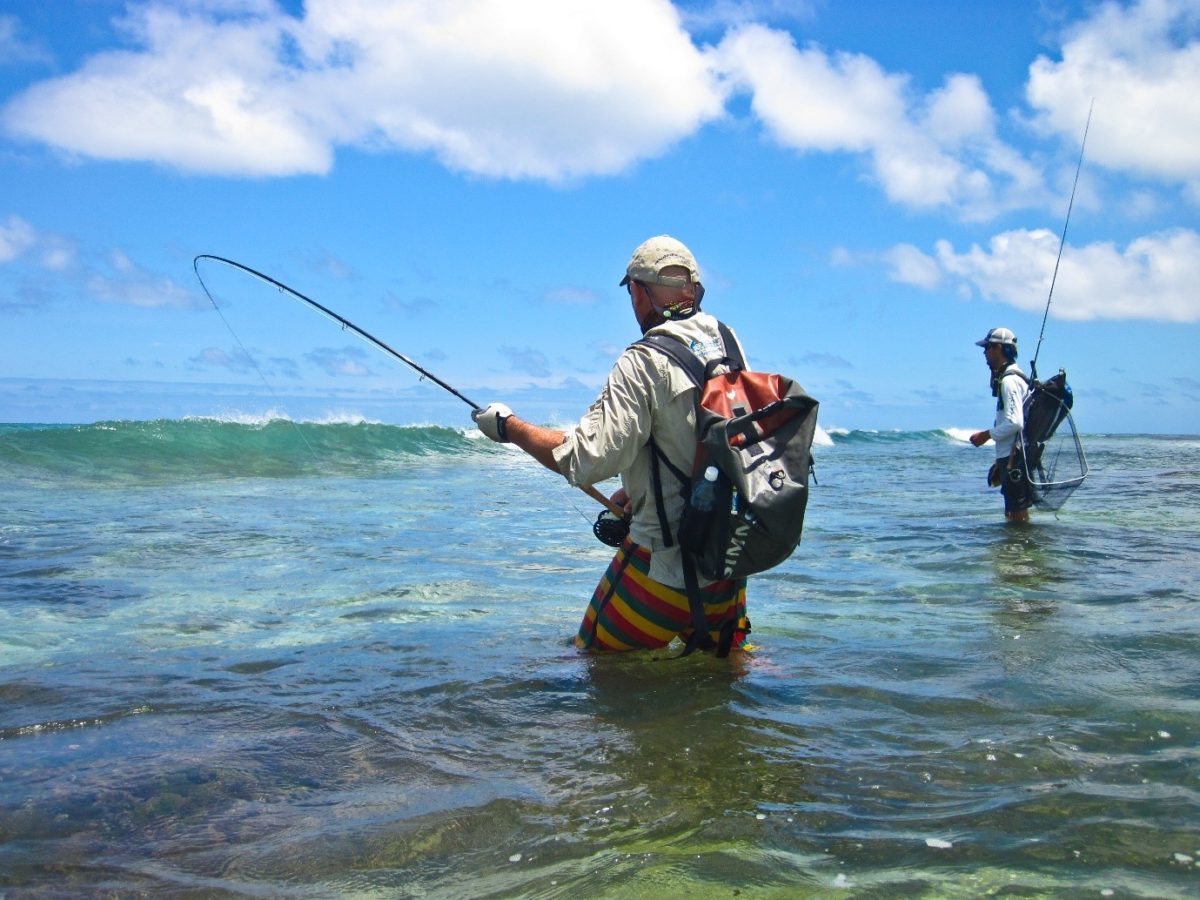If you’ve ever stood knee-deep in a serene mountain stream casting for trout, you might assume all fly fishing is the same—until you step into the surf, aiming for a lightning-fast tarpon. While both styles share the art of the cast and the thrill of the catch, Saltwater fly fishing introduces a whole new set of challenges, gear demands, and environmental considerations. Understanding these differences is crucial for anglers who want to master both worlds and adapt successfully.
Understanding the Core Differences
At first glance, the main distinction between saltwater and freshwater fly fishing is the type of water they take place in. However, the real differences run much deeper, influencing gear selection, casting techniques, fish behavior, and even the physical demands on the angler.
Location and Environment
Freshwater fly fishing typically takes place in rivers, lakes, and streams, often surrounded by calm, predictable conditions. In contrast, saltwater fly fishing is performed in dynamic coastal environments—flats, estuaries, mangroves, and open ocean waters. The constant movement of tides, wind patterns, and waves makes saltwater conditions far less predictable, requiring quick adaptation.
Target Species
Freshwater anglers often focus on species like trout, bass, or pike, which can be more predictable in behavior and location. Saltwater anglers face a different roster: bonefish, redfish, tarpon, permit, and giant trevally, each with explosive power, speed, and wariness. These species often demand longer, more accurate casts and stronger tackle.
Gear Differences Between Saltwater and Freshwater Fly Fishing
Saltwater environments are tough—both on anglers and their equipment. Corrosion, stronger fish, and longer casting distances all influence gear choice.
Rods and Reels
Saltwater rods are generally heavier (8–12 weight) compared to the lighter freshwater rods (2–6 weight) used for trout and bass. The increased weight allows for casting heavier flies and battling powerful ocean fish. Reels for saltwater fly fishing are built with sealed drag systems to resist corrosion and handle blistering runs from fast fish.
Lines and Leaders
Saltwater fly lines are designed to handle tropical heat without becoming limp, often featuring aggressive tapers for long-distance casting in windy conditions. Freshwater lines, in contrast, are made for cooler climates and delicate presentations. Leaders for saltwater fishing are heavier—often using fluorocarbon for abrasion resistance against sharp coral, rocks, and fish teeth.
Flies
Freshwater flies imitate insects and smaller aquatic creatures, requiring delicate presentation. Saltwater flies mimic baitfish, shrimp, and crabs, often tied with synthetic materials that resist water absorption and maintain shape after repeated casting.
Casting Techniques: Precision vs Power
While good casting is important in both environments, saltwater fly fishing often demands more power, distance, and speed.
Distance Casting
Saltwater species can be found further from the angler, requiring casts of 60–80 feet with accuracy. This is especially true for species like bonefish or permit, which spook easily if approached too closely. Freshwater casting usually prioritizes accuracy over distance, often in tighter spaces with overhanging trees.
Wind Management
Coastal environments almost always have some wind. Saltwater fly anglers must learn to cast directly into the wind, with the wind, or across it, adjusting stroke length and power. Freshwater anglers rarely face such persistent wind challenges.
Quick Shots
In saltwater fishing, opportunities can appear suddenly—a tailing redfish or a cruising tarpon may only be in range for seconds. Anglers need to pick up and shoot line fast. Freshwater fishing tends to offer more time to prepare and present the fly.
Fish Behavior and Fighting Strategies
The fight is where the differences between the two environments truly come alive.
Strength and Speed
Saltwater species are typically stronger and faster than freshwater fish. A tarpon can leap six feet into the air, while a bonefish can rip 100 yards of line in seconds. This requires anglers to have quick reflexes, strong knots, and precise drag settings.
Hook Setting
In saltwater fly fishing, a strip-set—pulling the line sharply with the rod pointed at the fish—is essential to drive the hook into the hard mouth of species like tarpon. In freshwater, a traditional trout set—lifting the rod tip—is often sufficient.
Playing the Fish
Saltwater fish often make long runs into open water, demanding strong backing and patience. Freshwater fish usually fight in smaller, confined spaces, allowing anglers to control the battle more easily.
Environmental Factors and Preparation
Saltwater fly fishing requires unique preparation and environmental awareness.
Tides and Currents
Understanding tidal movements is critical. Fish behavior in saltwater often depends on incoming or outgoing tides, which influence feeding patterns. In freshwater, water flow is important but usually more consistent.
Sun and Weather
Saltwater fishing typically involves bright sun and high heat, making sun protection essential. Freshwater anglers may face a wider range of weather conditions, from spring rains to autumn chills.
Boat vs Wading
While freshwater anglers often wade or use small drift boats, saltwater fishing frequently involves flats boats or skiffs to cover large areas and reach remote flats or channels.
Skills Needed for Success in Saltwater Fly Fishing
To excel in saltwater fly fishing, anglers must develop specific skills beyond those used in freshwater.
Spotting Fish
Saltwater anglers rely heavily on sight fishing, spotting fish in shallow water before making a cast. This requires polarized sunglasses, excellent vision, and the ability to read subtle signs like tails, wakes, and shadows.
Adapting Quickly
Conditions in saltwater can change in minutes. Anglers must be ready to change flies, adjust leaders, or reposition the boat at a moment’s notice.
Patience and Persistence
Saltwater fly fishing often involves long periods without a strike, followed by sudden bursts of action. Staying focused and ready is key.
Transitioning from Freshwater to Saltwater Fly Fishing
If you’re a freshwater angler looking to try saltwater fly fishing, preparation is vital.
Upgrade Your Gear
Invest in a saltwater-ready rod, reel, and lines. Ensure all equipment is corrosion-resistant and durable.
Practice Distance Casting
Work on casting 60–80 feet accurately, especially in windy conditions.
Learn Local Conditions
Research tides, target species, and preferred flies for your chosen location. Hiring a local guide can accelerate the learning curve.
Conclusion: Embrace the Challenge
Saltwater fly fishing is a thrilling extension of the freshwater experience, offering larger fish, tougher fights, and breathtaking environments. By understanding the differences in gear, technique, and environment, anglers can make the transition successfully and enjoy the unique rewards of both worlds. Whether stalking bonefish on a sunlit flat or battling tarpon in open water, mastering saltwater techniques will make you a more versatile and skilled angler. The next time you feel the urge to explore beyond the riverbank, step into the salt—you might just find your new favorite fishing frontier.



